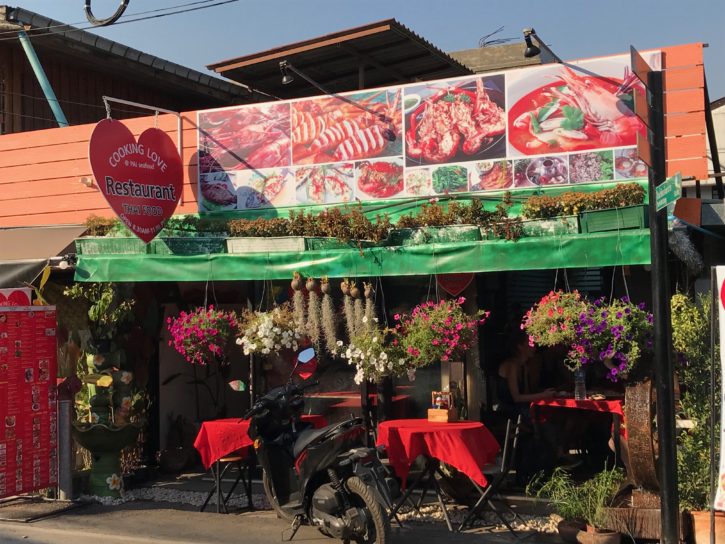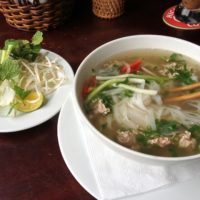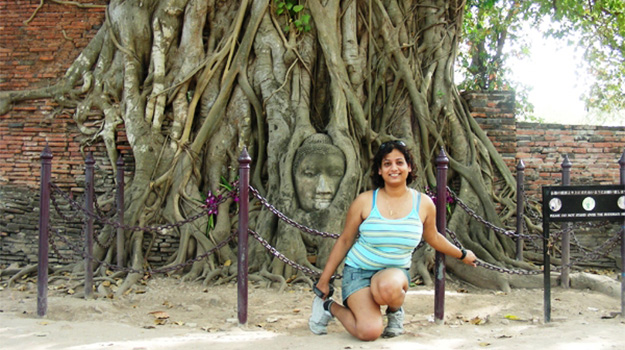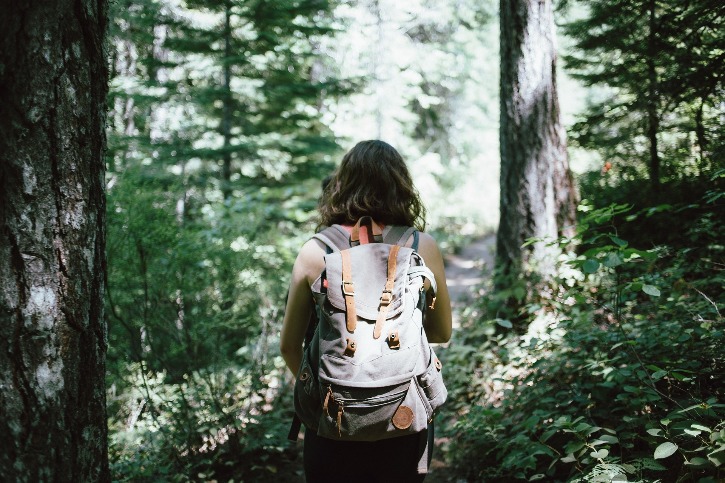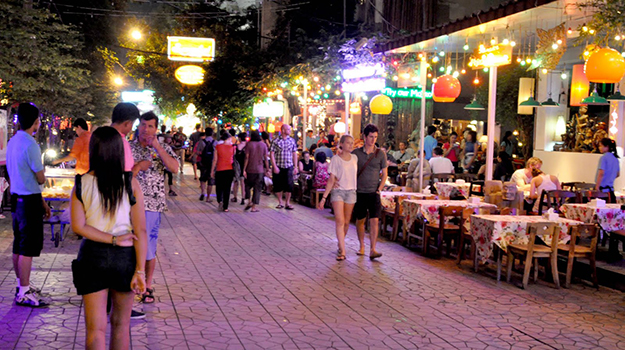Pai is a tiny town located in Mae Hong Son province of Northern Thailand and is currently a tourist hotspot with many attractions and activities to indulge in.
A first, I was struck by a sense of disbelief which slowly turned to awe. Then a smile broke out on my face. So, this was Pai, I thought happily. Pai, a small valley town in Thailand’s north that had eluded me thus far. Finally, I was here. Three things jumped up at me at once – the number of bike rental companies, cafes and massage parlours – everything that made this tiny town the perfect place to relax and unwind for at least a few weeks – especially for a traveler on a budget.
The thrill is in the journey
From Chiang Mai, getting to Pai is an adventure of sorts. The mini-bus that brought me here via Route 1095 took me through 762 turns in its three- hour journey, each of them guaranteed to make my breakfast do bad things in the tummy. But if you can stomach the curves, you will be rewarded with jaw-dropping sights of jungles, farmlands and mountains.
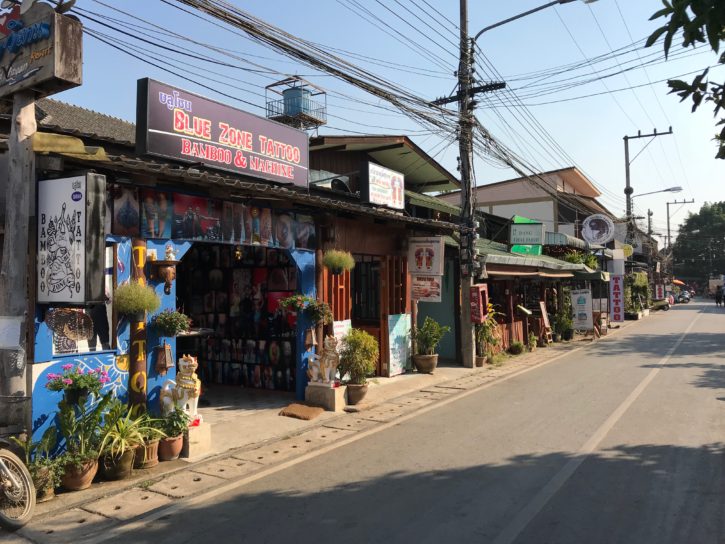
As you enter the town, the first thing you will see is the Pai World War II Memorial Bridge, an antiquated steel bridge, which the replaced the original wooden structure built in 1941 by the Japanese army over the Pai River when they wanted a route from Chiang Mai to Mae Hong Son to attack Burma (now Myanmar).
Once past the bridge, the distance into Pai is dotted with delightful cafes and guesthouses and tourists on scooters. In other words, you know you have arrived at a tourist hotspot and happy to just reach the end of the winding journey.
My experience in Pai
In all honesty, I don’t remember hearing about Pai before my last trip to Thailand. But the beauty of long- term travel is that you are bound to run into people who have “trawled the area” for hidden gems – like Pai. I was glad for that bit of information.
As soon as I arrived in Pai, I decided to stay longer than intended thanks to the adventurous solo-females in my hostel who convinced of Pai’s potential.
On my first day I spent time in the cafes, understanding the surprisingly vibrant coffee culture and chatted up with travelers who swore by Pai’s mind-blowing attractions and availability of cheap beer, food and motorbike rental. For a traveler, information like that is gold. I was surprised by the number of vegan cafes that sold health food and wheatgrass shots, but I am a carnivore, so I stuck to chicken and pork.
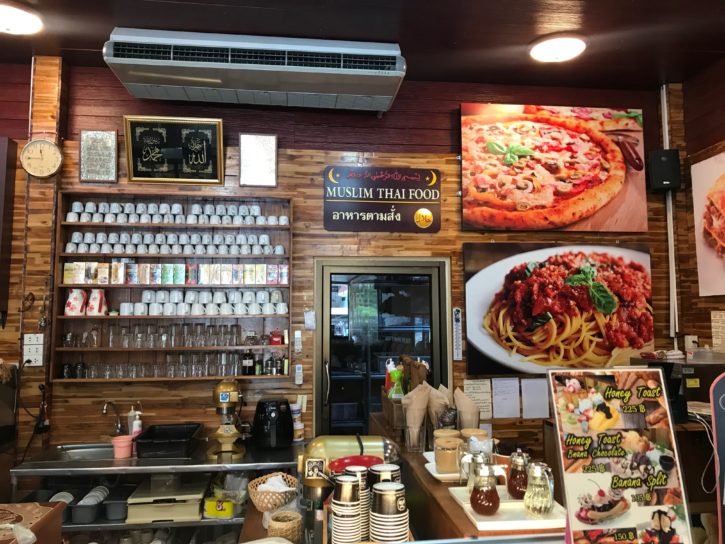
I was told that the town, with no more than 2,000 residents, swells up during the tourist season, which by the looks of it, was all-year-round, thanks to the influx of domestic tourists as well as outsiders. During the day, tourists zip by on scooters and arrive late in the evening covered in bandages and looking like mummies! Scooter-accidents are pretty common, or so it seemed, going by the number of bandaged-tourists limping their way around town, trawling the night market for food. I vowed to be careful – but by the end of my stay, I had managed to nick myself several times.
Over the weeks, here are a few places I explored.
Tham Lod Cave
Tham Lod Cave is one of Thailand’s most impressive and easily accessible caves, is extremely basic (meaning no artificial flood lights, fancy ferries or emergency evacuation plans) and offers an insight into dwellers of pre-historic times. It is a natural limestone cave system with a freshwater stream running through its middle. I was extremely glad to have taken this tour. Two guides carrying gas lanterns led us inside the cave for our explorations of three connected caves named Column Cave, Doll Cave and Coffin Cave – each (in the order of visit) comprising of stunningly huge stalactites, stalagmites, pillars and petrified waterfalls dangling above (Column Cave), followed by the Doll Cave with all kinds of rock formations that look like (sometimes with little imagination) animals including crocodile and frog. Lastly the Coffin Cave, which like the name, has pre- historic teak wood coffins and faded murals, thousands of years old was mind blowing. Of course, the caves are built on different levels and requires a lot of climbing of stairs in the dark and humid conditions. Be sure to hold the railings and don’t mind the coating of bat shit. That cannot be avoided.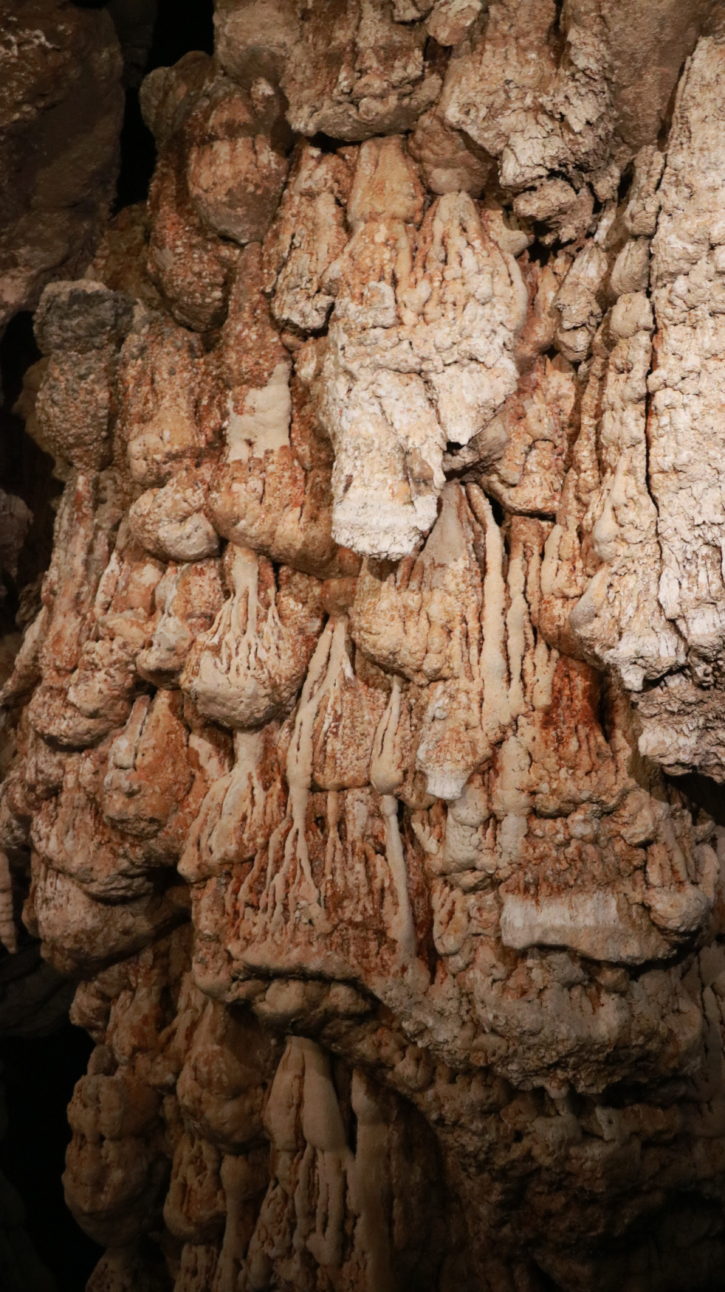
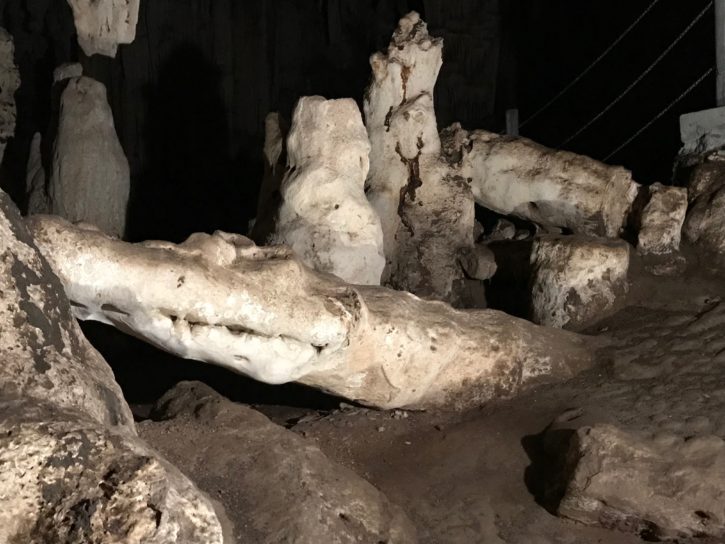
The best part of the exploration was riding the bamboo raft powered by a large stick pushing off the floor of the shallow river with the sound of hundreds of bats above. Eventually we emerged through a stunning cave opening out into the jungle. This is an archaeological site of great antiquity, being occupied in the pre-historic era from 9000BC to 5500BC by the Hoabinhian hunting tribe, a Stone Age community of hunters and gatherers. The caves were first excavated in the 1960s by Chester Gorman, an American anthropologist and archaeologist.
Secret Hot springs
If you only have time to visit one hot spring in Pai, then it should definitely be Secret Pai Hot Spring or Sai Ngam Hot Springs, a beautiful and natural hot spring located inside Lum Nam Pai Wildlife Sanctuary. Plenty of day trips to this place, which is recommended, but if you are on your own, be sure not to miss the turns and signboards. Prices for entrance to the sanctuary have been raised but it is definitely worth the price – for the sheer adventure of driving down those steep and winding forest roads. The road leading to this secret location is stunning and steep and you might even have to “get off” your car or jeep or push your scooter all the way up – but in the end, you get to soak up some natural minerals in the spring!
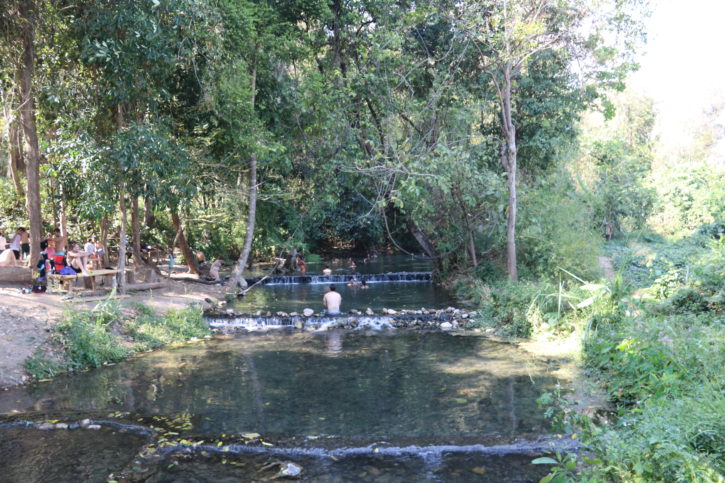
The nightlife
Pai night market is something else. Not chaotic mad like its cousin Chiang Mai, but more subdued and saner version and feels so much real and manageable. This vibrant night market come alive every day along the Walking Street and for such a small town, it is quite impressive in scale and the variety of goods. Everything from clothing to food, herbal medicines and souvenirs can be found here. It is but natural to get tempted to buy stuff you might not need, so go prepared.
Pai lacks nothing by way of nightlife – in fact it is one of the major highlights here. From pop-up bars to Indie houses playing jazz and blue, there is nothing that you can’t find here. It is pretty safe to be out late nights as well, just make sure you know your way back to your hotel.
The White Buddha
If you have been traveling around in Thailand for a while, visiting another Buddha statue might not sound all that appealing, but this one is worth it simply for the view! The 353 plus steps to get to the top will have you working up a sweat, but the panoramic view is definitely worth it. If you have an evening to explore on foot, walk the distance of two kilometers from the town centre to reach here. You can’t miss it.
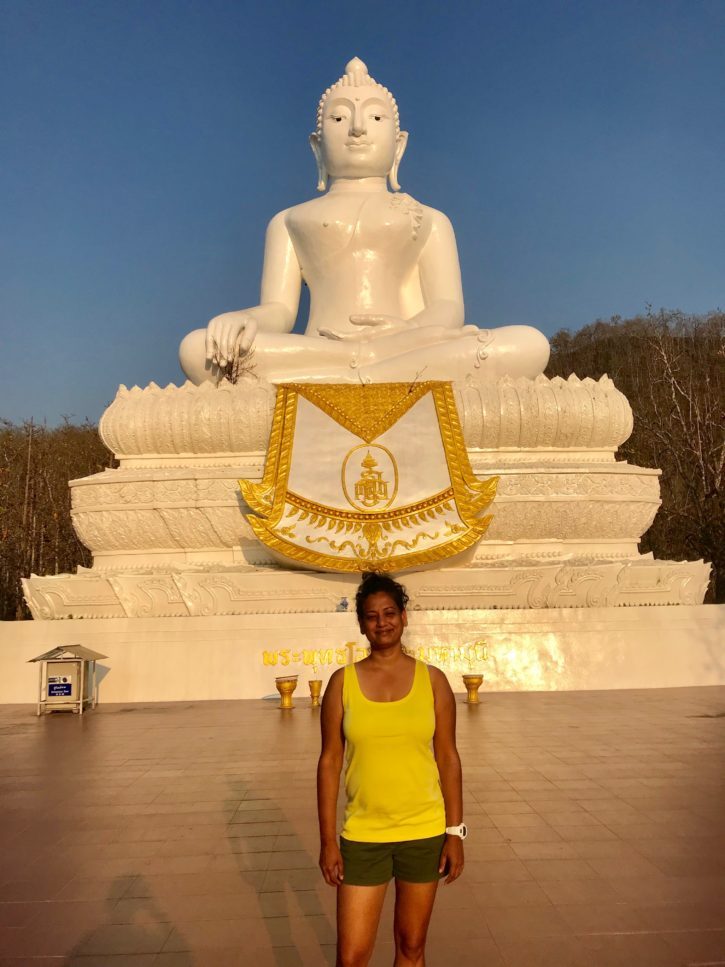
Pai Canyon
Pai is a great place to disconnect from the world and Pai Canyon’s landscape is just perfect to drive home that point. It is truly unique – with its tall pillars of rock it makes for quite a treacherous and interesting climb, but a worthwhile one, because the vista is simply beautiful. Whether you are a sunrise or a sunset person, Pai Canyon is the perfect place to see either. Even if you decide to hike all by yourself, you can be pretty sure you will not get lost.
Pai Canyon is basically one trail with great viewpoints and drops of 100ft. Exercise caution when leaning over the edge – there are no railings and the drop below can be dangerous. It is one of the most beautiful parts of Thailand.
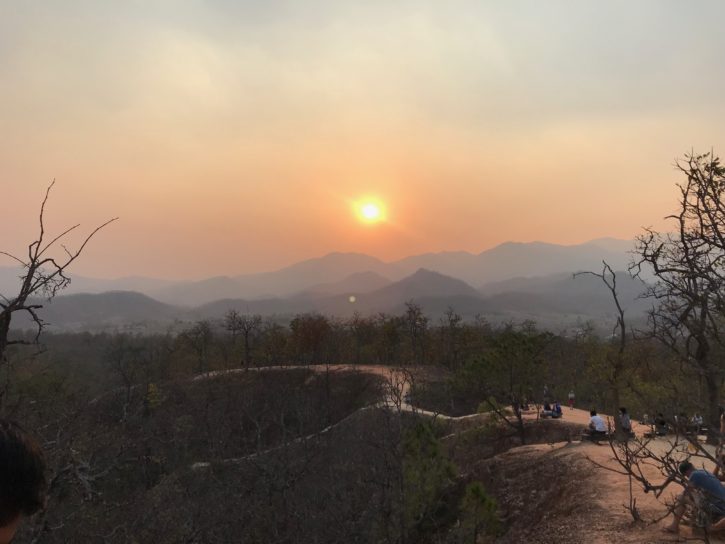
| SANTICHON VILLAGE
Five kilometers outside the town of Pai, is a small Yunnan cultural center, reachable via few twists and turns. This was the village where the Chinese people fleeing the revolution of Mao Tse Tung settled in. Today, the descendant of the settlers can be seen here. There are a couple of different things to do at Santichon Village. The first would be to wander around and check out the clay houses and eat some of the traditional Yunnanese cuisine – like the fried shiitake mushrooms and steamed black chicken which are hot favourites. |
WHAT NOT TO MISS
Land Split
One fine day, without a warning or reason, the land split in two making it impossible for the owner to cultivate soybean. Today, it is a great place to chill out in a hammock and sip delicious fruit drinks the innovative farmer has concocted. Despite my dislike for fruit and fruit drinks, I gave it to his masterpiece of a drink made of rosella (a type of hibiscus). In the end, gave in a bought two bottles of jam, which of course I had no use for.
Pam Bok Waterfall
Also known as the “jumpy” waterfall, since there’s a rock to jump off of and a pool just deep enough to accommodate it, this is my favorite waterfall. Here you can swim right up to the falls and stick your face under the running water. The water here is quite cool (even in summer), because of all the shady trees around.
Tubing on The Pai River
I spent some extended hours over a week simply tubing on the Pai river, letting the gentle river push me downstream. There is something extremely calming about this activity, especially when your legs can’t take any ore hiking. Tubing is quite a popular pastime in Pai (which of course is not possible in the rainy months).
Walk the WWII (Memorial) Bridge
The WWII Bridge was built by the Japanese back in 1942. The bridge was used to transport weapons and supplies to Myanmar during WWII. This is one of the most historical places in town and even if you aren’t keen on history, simply walking across the bridge with some gorgeous views makes for great photo-ops.
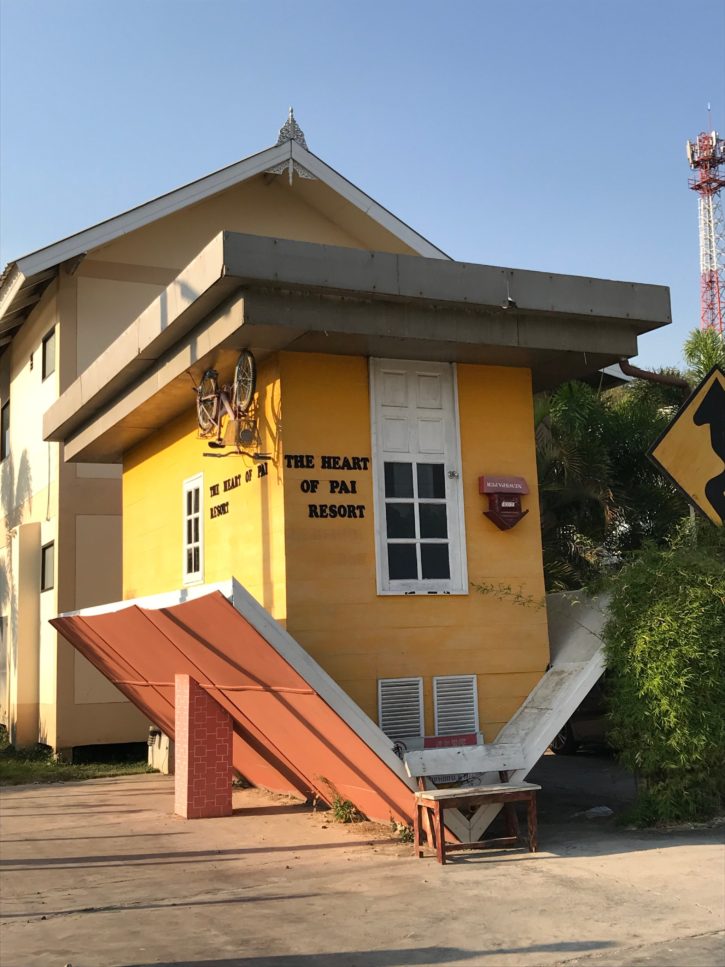
HELPFUL INFORMATION1. Nearest airport and railhead is Chiang Mai 2. Transportation to Pai can be booked at your hotel. 3. Don’t risk riding a scooter unless you have prior experience 4. Always carry small change in local currency 5. Avoid drunken driving 6. Cover your shoulders, wear long pants/skirts for your visit to White Buddha 7. Unless you are great at reading maps, can speak the local language and don’t mind getting lost – don’t venture out into the countryside by yourselves. The best option is to book a tour. It is a safe way to enjoy the sights. |
The energy of Pai is high. Plenty of young travelers make the journey here for the vibe, hippie-culture and cheap accommodation and food. To some, it is a place to heal. For others, it brings out a sense of community. For me, it was a place with much to see and do – hiking, exploring caves, waterfalls, strawberry farms, rice terraces or tubing – but more than that it was the sounds of birds and farm animals, of waterfalls and the quiet of the countryside and the chance to reconnect with nature that was the clincher.

